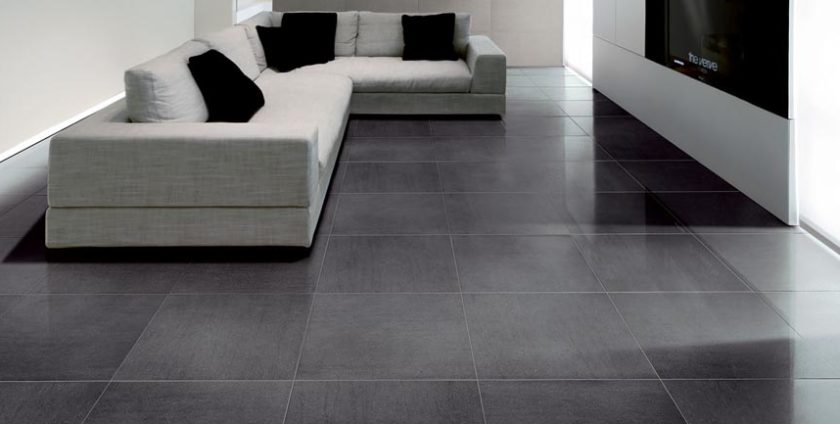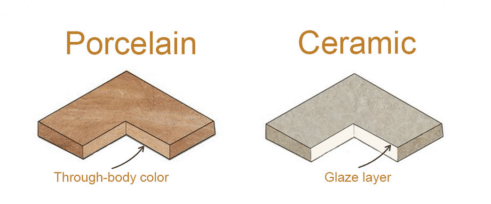
When visiting your local store, shopping online, or browsing through the aisles, you may have heard mention of these two materials being compared by the salespeople at your tile shop, boasting a large difference between the two materials to make sure that the store’s porcelain tiles are well justified for it’s much higher price. The key thing to remember is that ceramic and porcelain are indeed composed differently, but are only separated by slight differences, The most evident difference between these two is that porcelain tile is much more impervious to water, so that ceramic tile would be more susceptible to water infiltration. When choosing between these two tiles, their definitions are stripped down and the essential difference only becomes the amount of water that can be absorbed. Porcelain is more smooth and much denser, so it has less water absorption capabilities.
Porcelain and Ceramic are actually both from the Ceramic family. The difference between the two is stated above, so manufacturers engage in a war with words where they analyze and instil the important qualities of the tile, and then assign them their name.
The war of words is then complemented with the allure of marketing campaigns, promotions and copywriting which further glamourizes the porcelain name. If readers are to think of that word, the first few images that might enter your thoughts are fine china and is often associated with being smooth, dense, fine and translucent. This mental imagery doesn’t fit the standard of the modern porcelain tile, they are used by manufacturers to limit their liability and justify their prices.

We mentioned earlier that the key difference between Porcelain and Ceramic is the rate at which water is absorbed. Under industry standards (American Society for Testing and Materials), the rate at which water is absorbed by Porcelain is .5 percent, and sometimes even lower. The tile is characterized by being extruded, as well as that there are fewer impurities than it’s Ceramic counterpart, and lacks in the material kaolin, whereas Ceramic is more abundant. The way both tiles are fired and created would not set them apart, at which point we would come back to the chief difference of the rate that water penetrates and is absorbed by the tile.
When you are checking the tiles at your local store, you may wonder how you can tell that if the tile you are looking at is actually Porcelain or Ceramic. Of course, the best way is to test the water absorption, but this would be a very difficult and peculiar thing to do. One of the ways to verify that the tile is porcelain is to grab the box and check for the PTCA mark of certification. The mark you are looking for is green and gray, and it says that the tile is certified Porcelain, and states the absorption rate of 0.5 percent.
If you are looking to purchase Ceramic or Porcelain tile, it is not recommended that you place this tiling outside. The durability of Ceramic is not on par with other materials for outdoor use due to its high water absorption rate. What is worse, if you are living in colder climates, your Ceramic tile is most likely to crack early in the cycle. Make sure you check out PEI rating too.
To conclude, Ceramic tile can be cheaper but absorbs more water. Now that you are more informed, you can choose whether value or price would make a difference for you. Feel free to browse our website for more information regarding other materials.
- By: Kenneth Woosley
- Category: Tile
- 0 comment

Leave a Reply